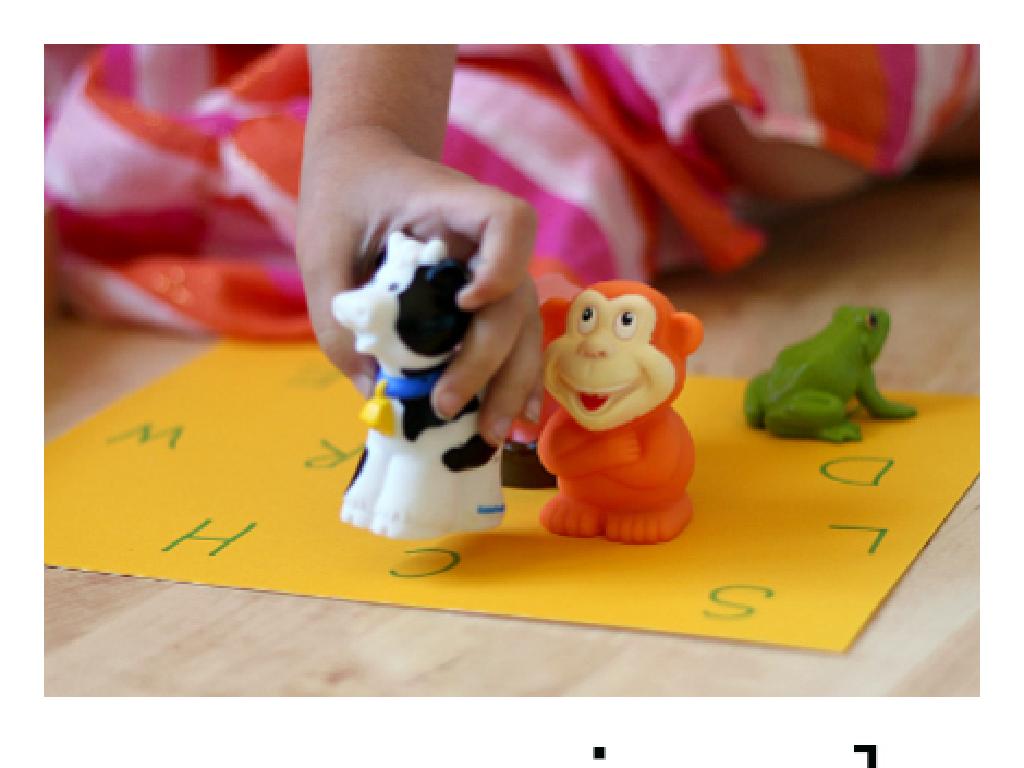Estimate Differences: Word Problems
Subject: Math
Grade: Fourth grade
Topic: Subtraction
Please LOG IN to download the presentation. Access is available to registered users only.
View More Content
Welcome to Estimating Differences!
– What is estimation?
Estimation is finding a number close to the exact amount.
– Why learn estimation?
Estimation saves time and helps in quick decision making.
– Estimation in daily life
Used in shopping, cooking, and planning events.
– Practice estimation with examples
Example: If a toy costs $15 and you have $20, estimate the change.
|
This slide introduces the concept of estimation in subtraction, explaining its definition and importance. Estimation is a valuable skill that allows students to quickly find an approximate answer without needing the exact number. It’s particularly useful in situations where a rough answer is sufficient for decision-making, such as budgeting or time management. In daily life, estimation can be applied in various scenarios like shopping, where one may need to quickly check if they have enough money to make a purchase, or in cooking, to adjust recipes. Encourage students to think of times they have used estimation themselves. The slide also sets the stage for practical application, where students will practice estimation through word problems, enhancing their understanding of the concept.
Understanding Estimation in Subtraction
– Estimation is a ‘math guess’
– Think of estimation like guessing the number of candies in a jar.
– It’s about finding a close number
– The goal isn’t to be exact, but to be close to the actual answer.
– We round numbers to estimate
– If you have 354, you round to 350 to make it simpler.
– Estimation simplifies calculations
|
Estimation is a fundamental skill in mathematics that allows students to make an educated guess about a number. It’s particularly useful when exact values are not required, or when quick calculations are needed. Teach students that estimation is not about finding the perfect answer, but rather a number that is close enough to be useful. Show them how rounding numbers can help simplify complex calculations, making them more manageable. Use real-life scenarios, such as estimating the time needed to complete a task or the total cost of groceries, to illustrate the concept. Encourage students to practice by rounding to the nearest ten or hundred in various subtraction problems.
The Power of Estimation in Subtraction
– Estimation saves time
– Checks work for reasonableness
– Does your answer make sense? Estimation can tell you!
– Useful in daily life
– Like guessing the total cost while shopping or portions in cooking
– Practice estimation with word problems
– Let’s estimate the difference in some fun scenarios!
|
This slide introduces students to the concept of estimation in subtraction, emphasizing its practicality and usefulness. Estimation is a valuable skill that allows students to quickly approximate an answer without needing the exact numbers, which is particularly helpful in tests or real-life situations where time is a factor. It also serves as a tool to check the reasonableness of an answer after performing a calculation. In everyday life, estimation is frequently used for tasks such as shopping, to get a rough idea of the total cost, or cooking, to measure ingredients without precise measurements. Encourage students to practice estimation through word problems that simulate real-life scenarios, enhancing their ability to apply math outside the classroom. Provide examples and guide them through the process of rounding numbers to the nearest ten or hundred to make estimation easier.
Rounding Numbers to Estimate Differences
– Learn to estimate by rounding
– Round numbers to the nearest ten or hundred to estimate
– Use number lines for rounding
– Visualize rounding on a number line to determine proximity
– Round 47 to nearest ten
47 rounds up to 50, as it is closer to 50 than to 40
– Practice with more examples
|
This slide introduces the concept of estimation through rounding numbers, which is a fundamental skill in solving word problems involving subtraction. Start by explaining that rounding simplifies numbers, making mental math easier. Show how a number line can be a useful tool to visualize the process of rounding. For example, with the number 47, students should see that it is closer to 50 than to 40 on the number line, so it rounds up to 50. Encourage students to practice this skill by rounding various numbers to the nearest ten and hundred. Provide additional examples and guide them through the process to ensure understanding. This will prepare them for estimating differences in upcoming word problems.
Estimating Differences in Word Problems
– Round numbers to nearest ten or hundred
– If a number is 142, we round it to 140 (nearest ten) or 100 (nearest hundred).
– Subtract the rounded numbers
– After rounding 142 to 140 and 127 to 130, we subtract: 140 – 130 = 10.
– Check if the estimate is reasonable
– Does the estimate answer seem close to the actual numbers? If yes, it’s reasonable!
|
This slide introduces students to the concept of estimating differences through rounding in subtraction word problems. Start by explaining the importance of estimation in everyday situations, such as when making quick calculations in a store. Teach them how to round numbers to the nearest ten or hundred, which simplifies the subtraction process. After they perform the subtraction with the rounded numbers, encourage them to reflect on their answer to ensure it’s logical based on the original problem. Provide several examples and practice problems to help them master these steps. Remember to emphasize that estimation is a valuable skill for making quick and efficient calculations.
Estimating Differences in Word Problems
– Example: Estimate 256 – 89
– Round to nearest ten: 260 and 90
– 256 rounds up to 260, while 89 rounds up to 90
– Subtract the estimates: 260 – 90
– Perform the subtraction with rounded numbers
– Estimated difference: 170
– The result gives us an estimated difference
|
This slide introduces students to the concept of estimating differences using rounding in subtraction word problems. Start by explaining the importance of estimation in everyday situations, such as when making quick calculations in a store. Present the example problem and guide students through the process of rounding each number to the nearest ten for easier mental subtraction. After rounding, demonstrate the subtraction step and show how the estimated difference is obtained. Encourage students to practice this technique with various numbers and to understand that estimation is a useful skill for making quick and reasonably accurate calculations.
Estimating Differences in Word Problems
– Word problems & estimation
– Steps to estimate in problems
– Read carefully, round the numbers
– Example word problem
– If a toy costs $52 and you pay $60, estimate the change.
– Solving together as a class
|
This slide introduces students to the concept of using estimation to solve word problems involving subtraction. Emphasize the importance of reading the problem carefully to understand what is being asked. Teach students how to round numbers to the nearest ten or hundred to make mental math easier. For example, if a toy costs $52 and you pay with a $60 bill, you can round $52 to $50 to estimate that you will get about $10 back. During class, work through this example together, and then have students practice with similar problems. Encourage them to explain their estimation process to reinforce their understanding.
Class Activity: Estimate the Difference
– Pair up and solve word problems
– Use estimation for differences
– Round numbers to nearest ten or hundred
– Discuss your estimation strategy
– Did you round up or down? Why?
– Share your solutions with the class
|
This activity is designed to enhance students’ estimation skills within the context of subtraction. Students will work in pairs to encourage collaboration and discussion about different estimation strategies. Provide a variety of word problems that require students to estimate differences. Encourage them to round numbers to the nearest ten or hundred as a strategy and to think critically about when to round up or down. After solving the problems, each pair will share their solutions and explain their estimation process to the class. This will allow students to see multiple methods for estimation and understand the reasoning behind them. Possible activities for different pairs could include estimating costs in shopping scenarios, distances in travel-related problems, or time in scheduling events.
Estimation in Subtraction: Review
– Recap on estimation methods
– Reviewed rounding and front-end estimation.
– Understanding estimation utility
– Estimation helps make quick & reasonable calculations.
– Emphasize consistent practice
– Encourage questions and curiosity
– Ask questions if unsure about estimation techniques.
|
In today’s lesson, we revisited the concept of estimation, focusing on its application in subtraction word problems. We discussed different methods of estimation, such as rounding to the nearest ten or hundred and using front-end estimation. We also explored why estimation is a valuable skill in everyday life, allowing us to make quick, reasonable calculations without needing exact numbers. It’s important to remind students that mastering estimation takes practice, and they should not be discouraged by initial difficulties. Encourage them to practice with a variety of problems and to ask questions whenever they are uncertain about how to estimate effectively. This will help solidify their understanding and build confidence in using estimation in real-world scenarios.
Homework Challenge: Estimating Differences
– Take home your worksheet
– Estimate differences in problems
– Round numbers, then subtract to estimate
– Bring answers for a game review
– We’ll play a fun game to review answers
– Practice makes perfect!
|
This homework challenge is designed to reinforce the concept of estimating differences through word problems. Students should take their worksheets home and work on rounding the numbers to the nearest ten or hundred as appropriate, then subtract to find an estimated difference. Remind them that estimation helps to quickly find an answer that is close to the actual value. The following day, be prepared to engage the class in a review game that makes learning fun and interactive. This game will also serve as an informal assessment to gauge the students’ understanding of the concept. Encourage students to do their best and remind them that practicing these skills will help improve their math fluency.





